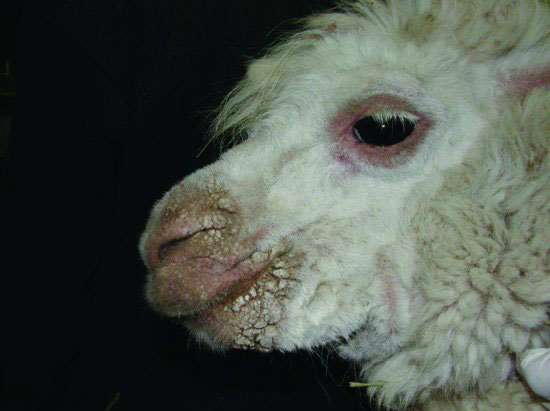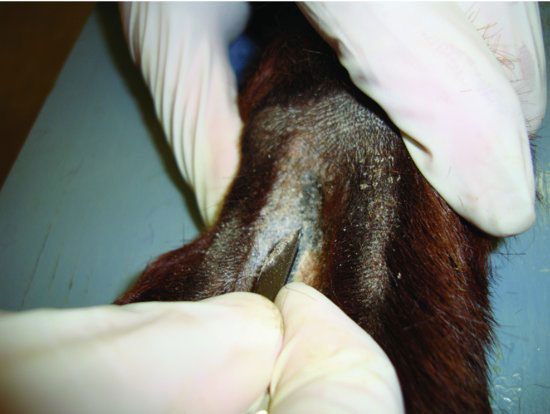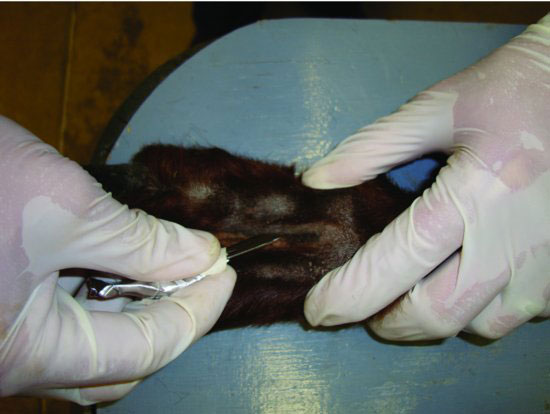Figure 29.2 A male alpaca severely affected by sarcoptic mange. This animal was primarily affected around the eyes, ears, muzzle, inguinal region, perineum, and feet.

Deep scrapings (e.g., for Chorioptes sp, mites) are done in similar fashion, but the affected skin is squeezed upward using digital pressure, and the scraping is performed until bleeding occurs. One of the most consistent sites in camelids for detection of Chorioptic mange is the dorsal interdigital spaces. The interdigital space is scraped with a scalpel blade until light bleeding is detected (Figure 29.3). Exfoliated debris is picked up with the blade (Figure 29.4), deposited on the slide, immersed in mineral oil, and covered with a coverslip. Chorioptes mites are easily recognizable under 4× and 10× power and are characterized by round bodies and long, slender legs. (See Figure 29.5.)
Figure 29.4 Exfoliated skin cells and debris collected from the interdigital space for microscopic examination.

Stay updated, free articles. Join our Telegram channel

Full access? Get Clinical Tree



